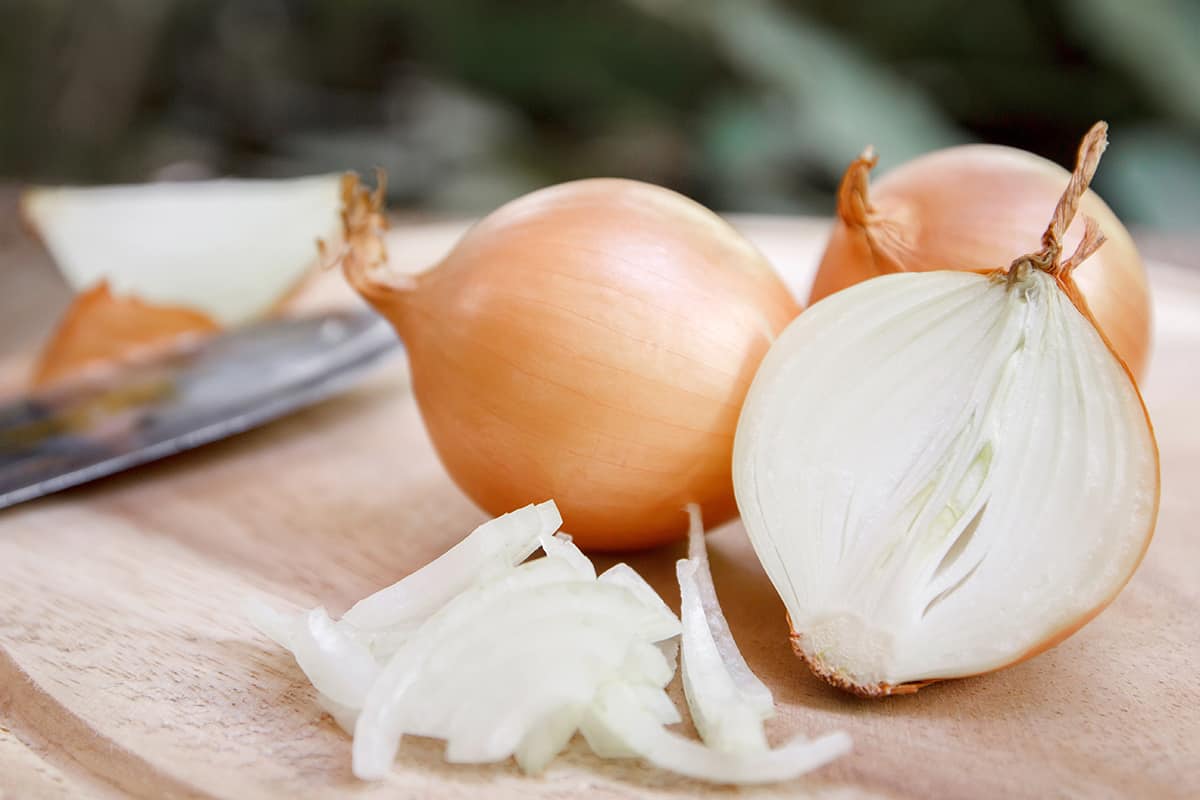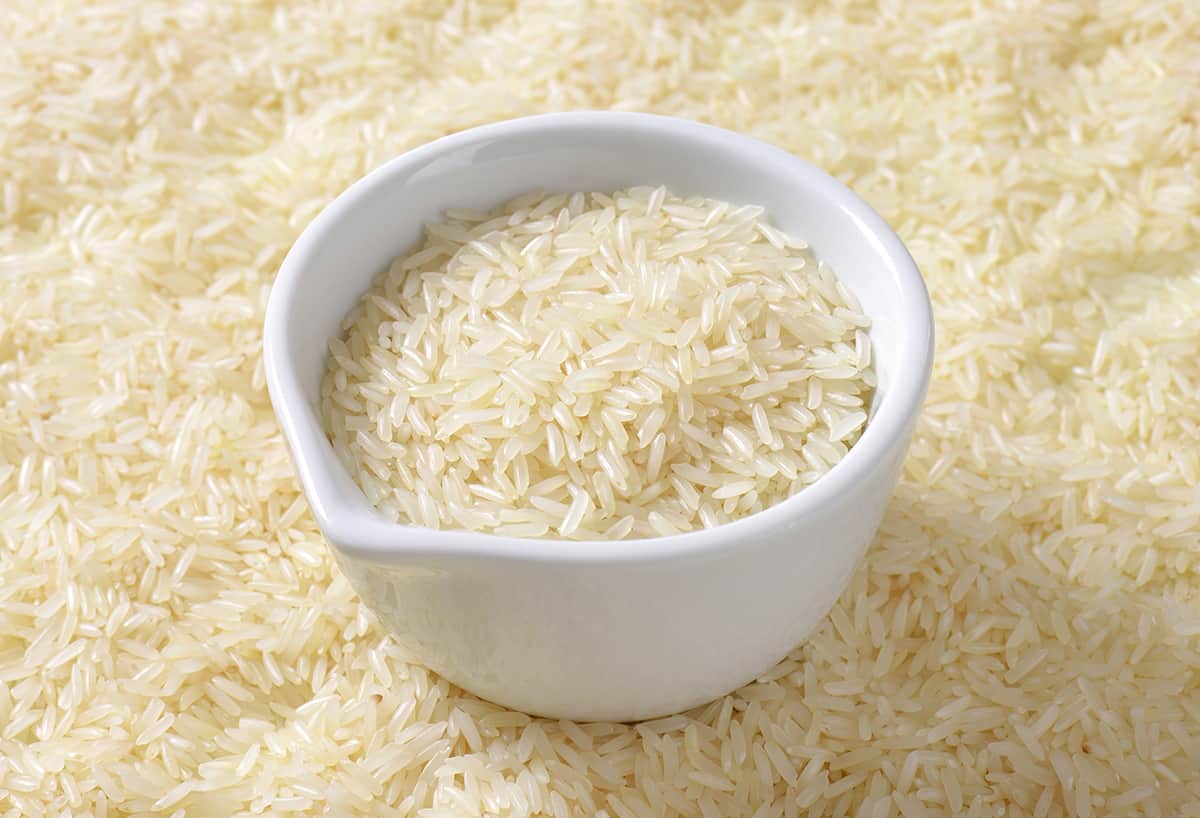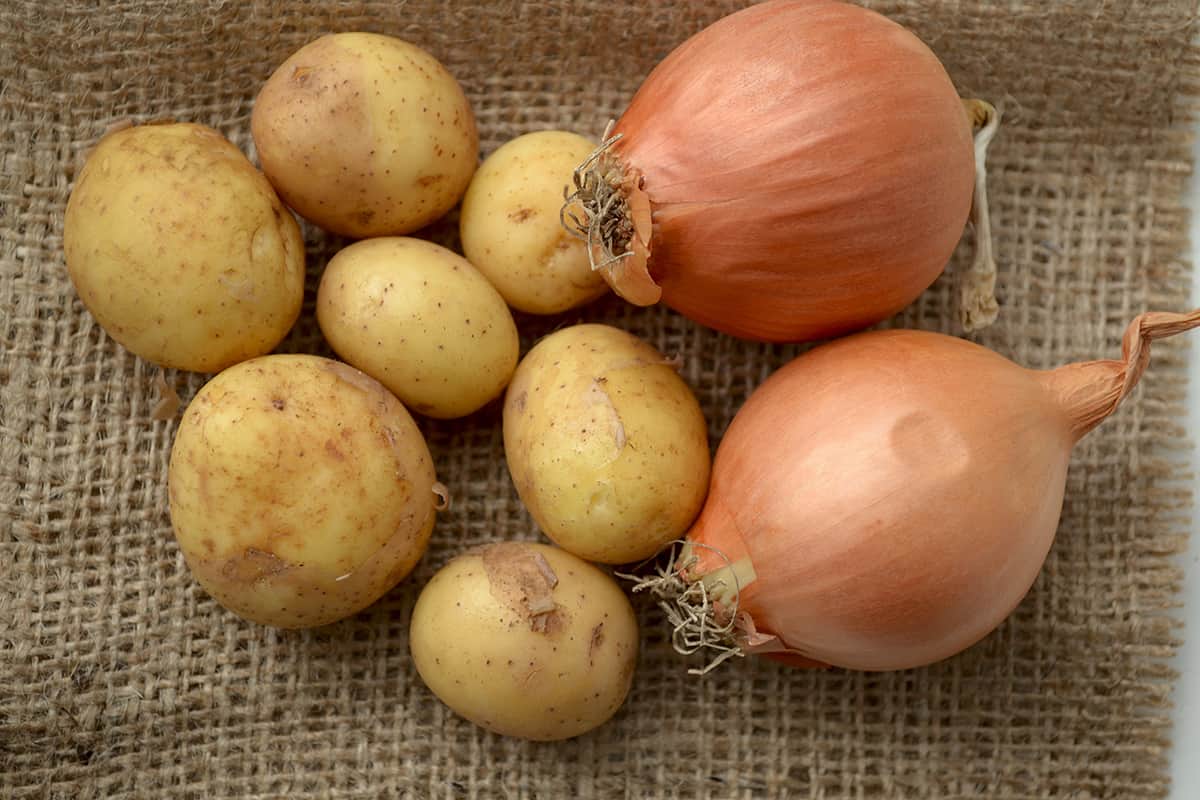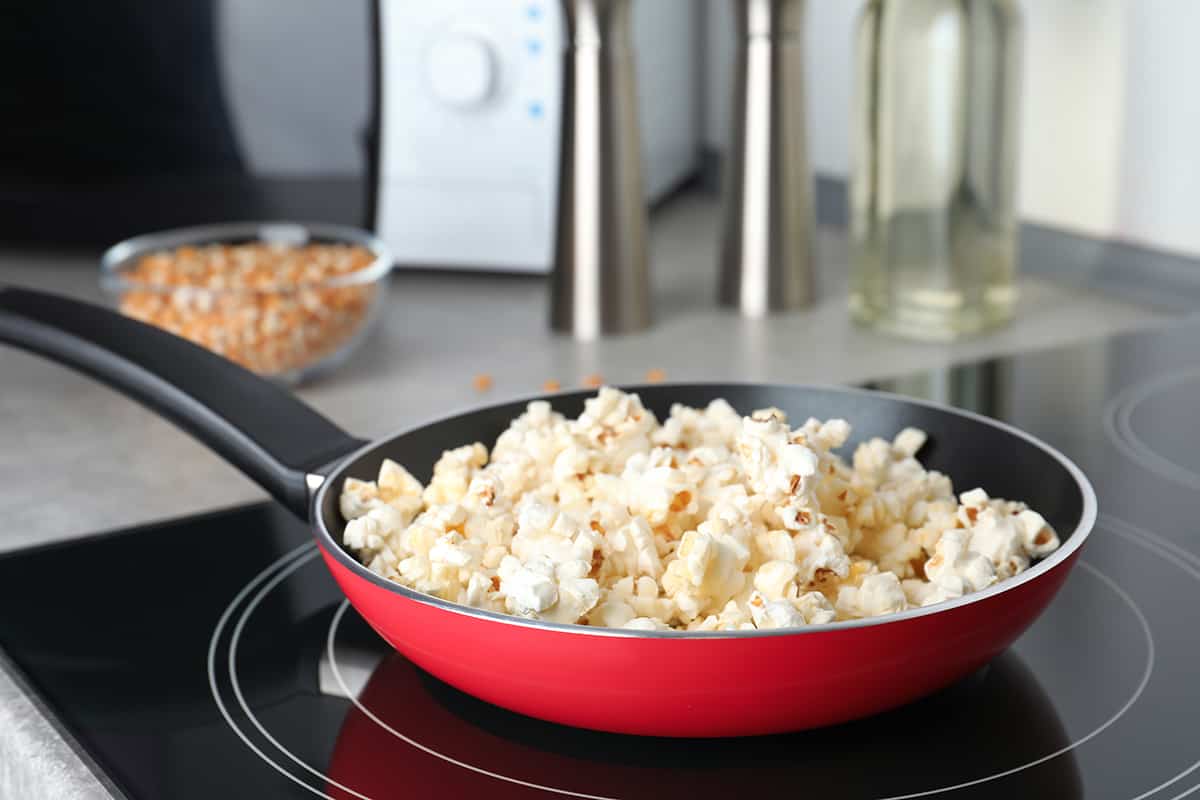Have you ever looked through a book of recipes only to be dumbfounded by what a medium onion is? Seriously, how do you tell how large (or small) a medium onion is when there is no standardized onion sizing? Well, there is, according to the USDA, but if you don’t have time for that, I’ve got the next best solution for you.
Onions are measured either by weight or size. So, a medium onion would refer to an onion that is between 6 and 8 ounces or measures between 3 and 3-3/4 inches in diameter.
To put that into perspective, a medium onion would weigh as much as a roll of quarters or would be about half the length of a dollar bill.
But there is a lot more you can learn about onions, especially when dealing with recipes. For the remainder of this guide, I will cover all of the relevant information you need to know about onion sizes to make your next dinner recipe shine.
Onion Sizes

When looking at onions at the grocery store, you might find that they look identical in their crates or inside the mesh bags. However, you should know that onions receive labels based on how much they weigh in ounces. Other times, you may want to measure an onion by how wide it is.
By Weight
As such, you can immediately classify whether an onion is small, medium, or large based om how many ounces it weighs. Here’s a quick overview to tell which size category an onion falls into:
- Small onions—3 to 5 ounces
- Medium onions—6 to 8 ounces
- Large onions—10 to 12 ounces
However, these weight figures are just averages. What you’ll find in a bag or crate of onions will vary slightly. For instance, a bag containing large onions, which might weigh around 5 pounds, may contain 1 or 2 medium or small onions. However, their total weight will almost always be close to or precisely 5 pounds.
While I would highly recommend that you get a reliable digital scale for your kitchen, you can figure out the size class of an onion by using everyday objects as references. So, a small onion would be about the same weight as 2 D-cell batteries.
A medium onion would weigh about the same as a roll of quarters. Finally, a large onion would be the same as a ceramic coffee mug. The fruit equivalents would be a lemon, a navel orange, and a small grapefruit for small, medium, and large onions, respectively.
By Size
The simpler way to tell which size category an onion falls into is by measuring its diameter. Now, I’m not telling you to keep a ruler or tape measure on hand whenever you need to make a batch of caramelized onions. Instead, you can use everyday objects that measure around 3 or 4 inches.
That being said, let’s take a look at the size classifications of onions. When measuring onions by size, they will fall into 1 of 6 size classes, namely:
- Creamer—shorter than 1 inch in diameter
- Small—1 to 1-1/4 inches
- Medium—2 to 3-1/4 inches
- Large—3-1/4 to 3-3/4 inches
- Colossal—3-3/4 to 4-1/2 inches
- Super Colossal—at least 4-1/2 inches
Onion Size Chart
The following table will help you determine what size an onion is by weight or size.
| Onion Size | Weight (oz.) | Diameter (in.) |
| Creamer | < 1 | |
| Small | 3 to 5 | 1 to 1-1/4 |
| Medium | 6 to 8 | 2 to 3-1/4 |
| Large | 10 to 12 | 3-1/4 to 3-3/4 |
| Colossal | 3-3/4 to 4-1/2 | |
| Super Colossal | > 4-1/2 |
Using Onions in Food Recipes
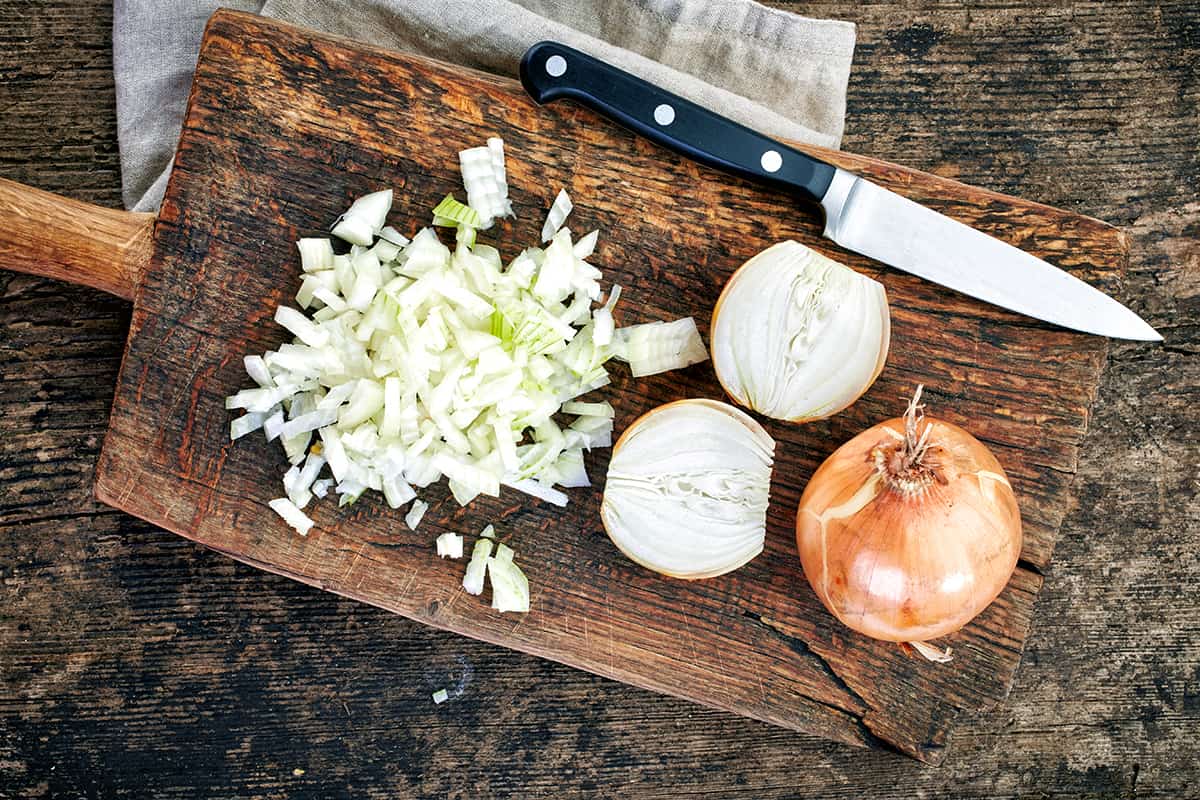
I’ll help you figure out what different onion sizes will look and feel when using them in recipes.
Volume
Some recipes will not ask that you prepare a small, medium, or large onion. Instead, they’ll have specific volume requirements, which are usually in cups or teaspoons. This is true for all recipes that need diced or chopped onions.
So, how much many tablespoons or cups is a small, medium, or large onion? The results may vary, but from preliminary tests, I found the following volume measurements for each size.
Small—8 tablespoons or 1/2 a cup
Medium—16 tablespoons or 1 cup
Large—24 tablespoons or 1.5 cups
Please note that the overall volume of a small, medium, or large onion will vary based on its weight. For instance, a 3-ounce onion may produce a final minced onion volume that’s 1 or 2 tablespoons less than a 5-ounce onion, even though both onions fall into the small onion category.
With that said, I’ve got some excellent news for all the greenhorn home cooks out there. When a recipe calls for a certain onion size, you don’t have to worry about precise measurements. For the most part, missing or adding a few extra ounces of onions into a lunch or dinner recipe will not significantly impact its final outcome.
So, if your plan is to prepare a batch of minced, diced, or chopped onions, then you should stick to using small, medium, or large onions. You might want to avoid using colossal or super colossal onions since you may end up with more than half an onion more than the recipe calls for.
Weight
If you want to prepare a dish in bulk, then the recipe might ask that you peel and slice a certain weight of onions. Without a digital scale, you will not be able to follow the recipe to the dot. However, knowing how many small, medium, and large onions fit into a pound can be somewhat helpful.
For the most part, you can take a look at the weight label on the mesh bag to know the total weight of the onions. However, as I said before, a bag of onions may contain onions of different sizes, which add up to a certain weight.
So, let’s try and figure out how many small, medium, and large onions will weigh a total of 1 pound.
- Small—3-2/5 to 5-1/3
- Medium—2 to 2-2/3
- Large—1-1/3 to 1-3/5
